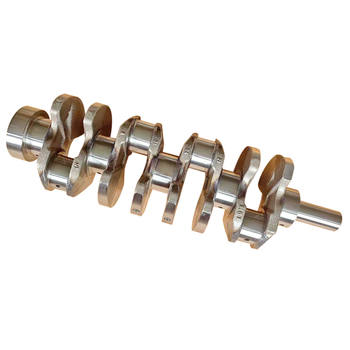The Critical Role of Crankshaft Testing in Quality Control
In the world of engine manufacturing, quality control is paramount. Every component must be tested rigorously to ensure optimal performance and longevity. One such critical component is the crankshaft.
The crankshaft, a key engine part, converts linear motion into rotational motion. Its role in an engine's functioning makes it a prime candidate for stringent quality checks. This is where advanced crankshaft testing methods come into play.
Traditional vs. Advanced Crankshaft Testing Methods
Traditional testing methods, while effective to some extent, often fall short in today's fast-paced, high-precision manufacturing landscape. They may lack the sensitivity or speed required to detect minor defects or inconsistencies.
Advanced crankshaft testing methods, on the other hand, leverage cutting-edge technology and innovative approaches to deliver accurate, reliable results quickly. These methods include:
Non-Destructive Testing (NDT)
NDT techniques, such as magnetic particle inspection and ultrasonic testing, allow for thorough examination of a crankshaft without causing damage. This means manufacturers can test components during various production stages, ensuring any issues are caught early.
Computerized Numerical Control (CNC) Testing
CNC machines offer high precision and repeatability, making them ideal for crankshaft testing. These machines can measure critical dimensions and check for defects with exceptional accuracy, enhancing the overall quality control process.
Dynamic Balancing
Imbalance in a crankshaft can lead to excessive vibration, reduced performance, and increased wear. Dynamic balancing tests help identify and correct imbalances, leading to smoother, more efficient engine operation.
Practical Applications of Advanced Crankshaft Testing Methods
So, how do these advanced testing methods translate into real-world benefits? Here are a few examples:
- Improved engine performance and longevity due to early detection and correction of defects
- Reduced warranty claims and customer complaints thanks to higher quality products
- Increased production efficiency through faster, more accurate testing processes
Choosing the Right Crankshaft Testing Solution
With so many advanced testing methods available, it's essential to choose the right one for your specific needs. Factors to consider include the type of crankshafts you're producing, your budget, and your desired turnaround time.
For instance, if you're manufacturing high-performance racing engines, you might prioritize highly sensitive testing methods to catch even the smallest defects. On the other hand, if you're producing engines for everyday vehicles, you might focus on efficient, cost-effective solutions.
The Future of Crankshaft Testing
As technology continues to evolve, so too will crankshaft testing methods. We can expect to see increased automation, greater precision, and faster results in the coming years. By staying abreast of these advancements, manufacturers can continue to improve their quality control processes and deliver superior products.
For more detailed information, please visit our official website: crankshaft testing




